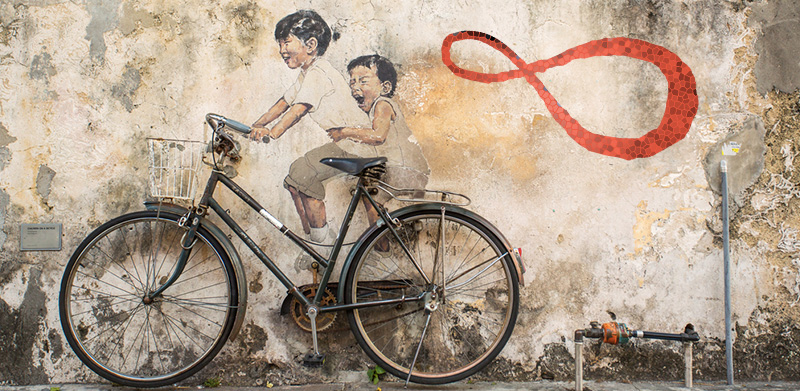Article cross-posted from PostCarbon. Written by Asher Miller. Image credit: Alexander Mazurkevich (edited to include Panarchy symbol).
*************************************************************************************************************************
Please share with Shareable. DONATE today to support our ad-free coverage of the real sharing economy
*************************************************************************************************************************
Introducing Six Foundations for Building Community Resilience, PCI’s new report which describes how communities can approach the full scope of the 21st century’s challenges equitably and sustainably.
It’s all too easy to look at the news these days and find an instant reminder of how vulnerable, and in some cases broken, our communities are — whether the risks they face are due to terrorism, natural disasters, economic struggles, dilapidated infrastructure, or a dozen other disruptive forces. I could quickly provide some examples, torn from this week’s headlines, but if you’re reading this a month, a year, or decade from now, it’s likely the task will be just as easy.
This is partly true, of course, because vulnerability has always been part of human communities. But in this age of global interconnectedness, those vulnerabilities are not only more complex and systemic, they’re chronic.
Since Post Carbon Institute’s formation a little over a decade ago, we’ve seen interest in building community resilience skyrocket — from the early days of the grassroots relocalization and Transition movements, in response to concerns about climate change and peak oil, to the more recent initiatives of the U.S. Department of Homeland Security and the United Nations to prepare cities for acute disasters.
In particular, interest in building climate resilience has grown exponentially since Hurricane Sandy hit the U.S. Northeast in 2012, and as the need for climate adaptation, not just mitigation, has become more and more evident.
Having ourselves promoted community resilience for years, we’ve been pleased to see the concept of resilience being embraced by a diverse collection of grassroots groups, government agencies, politicians, and philanthropists. But we’re also eager to ensure that community resilience building isn’t simply adopted an aspirational goal divorced of concrete strategies, or as a strategy to “bounce back” from one specific set of disruptions to a normal state that no longer exists.
Thankfully, resilience science — in particular the field of socio-ecological resilience — offers a treasure trove of invaluable insights and resources. And in just the last few years a number of useful frameworks and tools have been developed which aim to support local efforts. But, we’ve learned, some of the best thinking about community resilience can be hard to find or understand outside academia, and no single approach is likely to work in all communities considering their varied social, environmental, and economic realities.
So we set out to read everything we could get our hands on, to speak with experts in the field of socio-ecological resilience and innovative resilience builders from communities across the United States and abroad, and to draw upon our own learnings… all in order to see if we could glean any key insights that would be useful for local leaders and activists in the United States, and contribute to the larger conversation about resilience in human communities. The result of this effort is Six Foundations for Building Community Resilience.
If you’ve read this far, you’re probably hoping I’ll share those six foundations with you right here, right now. But instead I’m going to ask you to set aside 30 minutes and read the full paper, lest these six foundations become buzzwords all to easy to dismiss or forget.
We are also eager to hear from you, dear reader — who clearly cares as much as we do about strengthening our communities in response to the interconnected crises of the 21st century. Please read Six Foundations for Building Community Resilience and then share your thoughts on these and other questions:
- Do you find the approach in Six Foundations helpful?
- What aspects of the report are useful?
- What would you change?
- What real-life examples of community resilience building are you inspired by?
- What related research and scholarly work do you know about?
- What kinds of related resources would be helpful for students? For grassroots activists?
Your feedback will help PCI as we roll out new projects over the next few years, one of which will be a tool to help grassroots activists use the Six Foundations in their work.
I hope you’re as excited as I am about this report, the start of a major new PCI effort to help scale and strengthen community resilience building efforts across the United States.









